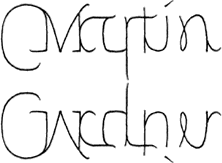Mathfactor Update
It’s been a few months now since we’ve posted any new podcasts, and from the many weepy emails asking when, oh when will the mathfactor podcast return, we know we’ve been missed — we’re really grateful that we have so many avid listeners! In the meantime, Stephen Morris has been holding down the fort with many excellent posts here on the site, as you probably know if you’re reading this here. Great work Stephen!
I thought I’d take a moment to share what’s been shaking round here and where things might be going. First off, I have to say, really, it has been nice taking a break from the podcast. After all, we’ve been doing mathfactor pieces steadily for six years! (Still have about 70 early radio segments to post, I think) But I know we’ll get back to it someday, maybe someday pretty soon. Ideas are certainly starting to pile up again…
In my own work, things are going great. Our new course, Mathematical Thought, is chugging along nicely in its second year, with our long-time correspondent Edmund Harriss and colleague Janet Woodland at the helm. This course is really quite radical in its way—students must take significant initiative to succeed, but are free to approach whatever mathematical ideas they want to, in a way that plays to whatever their expertise or interests are. So far, it’s working.
Meanwhile, I’m now teaching geometry for future teachers; I should have done this years ago—it’s obviously the most effective way to have a significant local impact on the culture of mathematics. The students are deep in the midst of wrastling with how to develop and communicate fun mathematical ideas in their classrooms, and the results seem promising.
Some careful listeners may have picked up that I’m now chair of my department, and in that role I’ve been working hard at infusing the place with the sensibility the Math Factor exemplifies:
Serious intellectual engagement is fun, expected of everyone, open-ended into a lifetime.
As happens, our college is in the midst of a major reassessment of our core curriculum, and we have a chance to work in that direction, producing a truly visionary core that will fully model these high ideals. The outgoing dean’s request for innovative course proposals was met by a resounding burst of energy and creativity and it seems we are poised for a really interesting and exciting period here.
So, when will the Math Factor podcast come back? We’ll see what happens in the next few months, but if all goes we might hope for, I may be in a position to foster a lot more of this kind of fun!
Ciao for now, Chaim








 Martin Gardner died this week.
Martin Gardner died this week. mathbun.com
mathbun.com